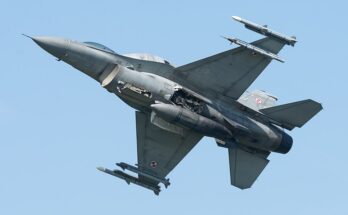by Dan Darling, International Military Markets Analyst, Forecast International.
The Latvian government reached an agreement in principle on August 25 regarding fiscal planning for the 2016 state budget. Under the agreement, all ministries will experience a 3 percent reduction to their respective budgets in 2016. Exceptions, however, were carved out for the Defense Ministry, Interior Ministry, Education and Science Ministry, and Health Ministry. The latter two are understandable areas for the government to protect, as these generally trigger populist sentiment and drive parents and seniors to the polls. Yet by ring-fencing funding for the first two ministries – defense and interior – the government is indicating that concerns over neighboring Russia continue to dominate security policy thinking.
While the Latvian government has continued to focus on low deficits and debt in order to adhere to EU Stability & Growth Pact rules, the Russian takeover of the Crimean Peninsula in March 2014, followed by Kremlin material and military support for ethnic Russian separatists within slices of Ukrainian territory, has triggered a sense of dread in the three small Baltic nations (including Estonia and Lithuania), all formerly part of Russia’s Soviet empire.
After Latvia experienced a sharp recession in 2009, the government focused on reducing expenditures in order to prevent a yawning budget deficit that would delay the country’s steady course toward acceptance into the eurozone. This initial belt-tightening resulted in year-on-year reductions to the defense budget of 37 percent and 11 percent in 2009 and 2010, respectively. For a small nation with a limited military and manpower base, such fiscal cuts placed severe pressure on the Latvian National Armed Forces.
It would be two more years before serious reconsideration of defense policy would take place, with a new National Armed Forces Development Plan (covering the years 2012-2024) approved by the government on June 19, 2012. That plan called for 72 minimum capability improvements that would require around $700 million-plus in funding. Immediately the reprioritization of defense as a core policy area was felt, as the defense budget experienced an 11 percent increase in 2013.
But Russia’s takeover and nationalization of the Crimean Peninsula brought a renewed sense of urgency in Riga toward all matters of national security. Border security, internal communications and counter-propaganda, military modernization, cyberspace, and calls for a NATO presence in the Baltics all became immediate points of emphasis for the Latvian government. With roughly one-third of Latvia’s population comprising people of Russian descent, a fear that the Kremlin would seek to trigger an ethnic “fifth column” within Latvian borders in order to undermine the nation’s sovereignty (or act as excuse for Russia to “rescue” its citizens outside its own borders) as occurred in Ukraine continued to drive Riga’s defense approach.
On July 3, 2014, the Latvian government and Parliament came together to pass a new military spending measure mandating annual increases to the defense budget in order to attain an earmark standard by 2020 equal to 2 percent of GDP. The latest government action calls for the 2016 defense budget to rise nominally by around EUR68 million, which would bring the spending level up to 1.4 percent of GDP.
It should be noted that the 2014 military spending agreement had earmarked the 2016 defense budget at 1.1 percent of GDP.
Clearly there is a sense among the Baltic nations that while adherence by NATO members to Article V of the Alliance’s founding treaty provides one element of protection, the best counter to Russia’s hybrid warfare approach is to reinforce their own military and internal security response capabilities.
For 50 years, Forecast International intelligence reports have been the aerospace and defense industry standard for accurate research, analysis, and projections. Our experienced analysts compile, evaluate, and present accurate data for decision makers. FI's market research reports offer concise analysis of individual programs and identify market opportunities. Each report includes a program overview, detailed statistics, recent developments and a competitive analysis, culminating in production forecasts spanning 10 or 15 years. Let our market intelligence reports be a key part of reducing uncertainties and mastering your specific market and its growth potential. Find out more at www.forecastinternational.com




